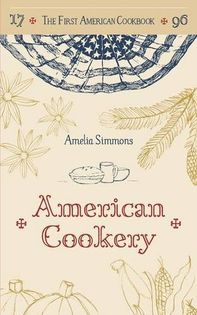
American Cookery
Considered the first American cookbook, with a dozen or more reprints and pirated editions by 1830 and recent facsimiles.
Advertisement
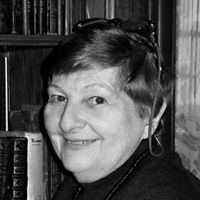
Culinary historian
https://en.wikipedia.org/wiki/Jan_Longone
Considered the first American cookbook, with a dozen or more reprints and pirated editions by 1830 and recent facsimiles.
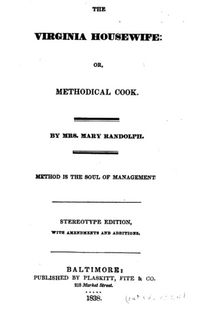
This book, the first southern regional, was very popular went through 19 printing before the Civil War and recent facsimiles.
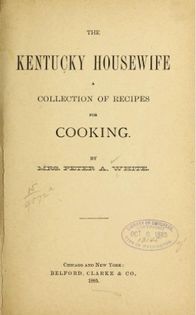
This book is rare and not as well-known as it should be - it is a fine and extensive (456 pages) compilation of Kentucky recipes.
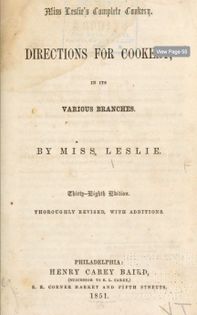
Miss Leslie was the most prolific and most published American cookery authority in the first half of the nineteenth century. In addition to her cookbooks, she authored novels, short stories, works for juveniles, etiquette books, and edited and wrote for numerous magazines. Her Directions (at least 150,000 copies sold) was a longtime best seller and was issued in revised editions. There are modern facsimiles of a number of her books.
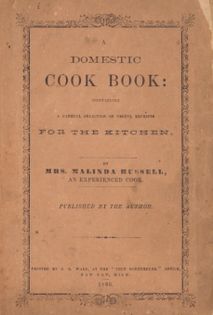
A rare item, only one copy known, by an African-American woman. She was a free woman of color and because of her Union sympathies, had to flee the South during the Civil War. She moved to Michigan and planned to return to the South to redeem her property. She was an indomitable spirit: her story is an African-American one and an American one. There is a modern facsimile.

The late 19th century produced a remarkable group of women who changed American cooking and life (Juliet Corson, Mary Johnson (née Bailey) Lincoln, Maria Parloa, and Sarah Tyson Rorer, among others). This book is among the most popular cookbooks ever published in America. Between its first appearance in 1896 and 1983, it went through twelve editions, more than seventy printings and had sold over three million copies. During the quarter of a century she devoted to teaching the art of cooking in America, she became a national celebrity. She authored many cookbooks, wrote for magazines and journals and produced promotional literature. Many facsimiles and re-dos of her works are available.
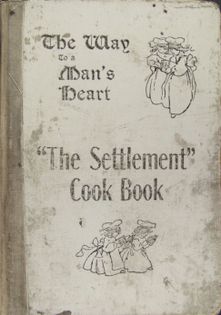
Lizzie Kander founded the first settlement house in Milwaukee. When the Board (male) refused to pay the printing costs ($18.00) for recipe booklets for her cooking classes and suggested that if she wanted to raise the money, she should do it herself. Which she did – most successfully. She served as editor for almost forty years, always revising, expanding and testing recipes. More than two million copies sold in more than forty editions, with money from sales being distributed to all Milwaukee charities for over 100 years. The Wisconsin Historical Society selected this book as one of the most influential volumes in their library of 3.6 million titles. This is a charity fundraising book, a way Ame
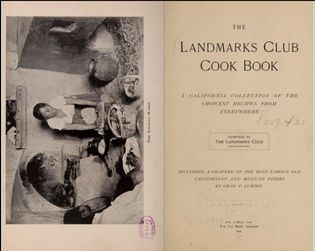
Eighteen historical photographs (before and after) of missions and other landmarks that were crumbling into ruin that the Club hoped to preserve. The foreword states that “The Chapter of recipes for the most famous dishes of old-time California, Mexico and South America... is believed to be the only reliable collection of the sort available.” Lummis explains that Spanish-American cookery is “of course, the oldest American ‘School of Cookery,’ with more than 350 years at its back.” This was a most successful charity.

First published in 1900 or 1901, there were 17 editions between 1900 and 1985. It went through numerous other editions after that, including some modernized. There are a number of facsimiles. The first few editions are quite scarce. Perhaps you will prefer the post-Prohibition issue which was reprinted from the 5th edition, containing "recipes using wines and liquors customary before Prohibition".
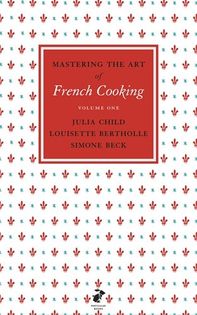
Julia Child (and television) clearly completely changed American cooking and entertaining. Julia was witty, gracious, very generous and professional. We all owe her a debt of gratitude.
Advertisement
